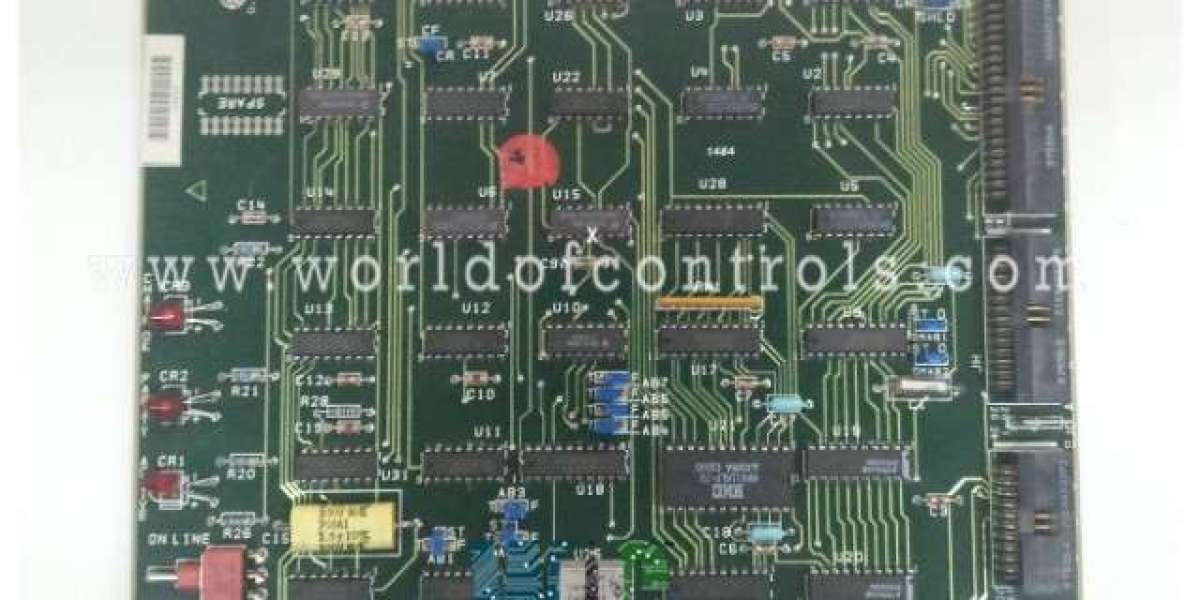Industrial gas and steam turbines are complex machines that require precise control and coordination to operate efficiently and safely. In General Electric’s (GE) Mark IV turbine control system, one of the most important components enabling this control is the C Bus Receiver Board. Though often overlooked, this board is crucial in maintaining reliable communication across the system.
The GE Mark IV Control System: A Brief Overview
Introduced in the 1980s, the GE Mark IV control system was a major step forward in turbine automation. It brought digital redundancy, real-time monitoring, and improved fault detection to industrial turbines, significantly reducing human error and increasing operational reliability.
The system is built using a modular architecture. Each function—whether it’s temperature regulation, fuel control, or protective shutdown—is handled by a separate circuit board. These boards communicate through dedicated data highways, one of which is known as the C Bus.
What Is the C Bus?
The C Bus is an internal communication channel within the Mark IV system. It is designed to transmit data between various control and monitoring boards in a synchronized and structured manner. Information such as sensor readings, command signals, and system status updates travel through the C Bus in real time.
Because of the critical nature of this data, the bus must operate with high reliability and low latency. This is where the C Bus Receiver Board becomes vital.
Role of the C Bus Receiver Board
The C Bus Receiver Board serves as the interface that receives data sent over the C Bus. It interprets, validates, and distributes this data to other modules within the system. In essence, it acts as a traffic controller, ensuring that each part of the system receives the correct information at the right time.
Some of its key functions include:
Receiving high-speed data from multiple sources within the control system
Synchronizing signals between redundant processing paths
Filtering and validating communication signals
Supporting real-time response in control loops
Without this board, communication between modules would be disrupted, potentially leading to incorrect operations or system faults.
Why It’s Critical to Turbine Performance
The performance of a turbine depends on how accurately and quickly its control system can react to changing conditions. Whether it's adjusting fuel flow, managing load demand, or initiating safety shutdowns, these actions depend on seamless data exchange.
If the C Bus Receiver Board fails or operates with degraded performance, it can cause:
Signal delays or data loss
Failure in executing control commands
Unplanned shutdowns
Increased wear and tear on turbine components
In critical environments—such as power generation plants or oil & gas facilities—these issues can result in costly downtime and safety risks.
Maintenance and Replacement Considerations
Since GE’s Mark IV systems have been in use for several decades, many of the original boards, including the C Bus Receiver Board, may be approaching the end of their operational life. Common issues include:
Aging components
Signal degradation
Physical wear due to harsh operating environments
Operators of these systems should implement regular inspection and diagnostic routines to ensure the receiver board is functioning correctly. If replacement is required, sourcing tested and compatible units from specialized suppliers or refurbishment services is essential.
Supporting Legacy Systems
Although newer turbine control systems (like GE’s Mark VI or Mark VIe) have replaced the Mark IV in many facilities, thousands of turbines around the world still operate on Mark IV architecture due to its proven reliability and cost-effectiveness.
The C Bus Receiver Board continues to play a central role in these legacy systems. Maintaining it in optimal condition helps extend the service life of the turbine, minimize unplanned outages, and ensure the continued safety and efficiency of operations.
Conclusion
In the intricate system of GE’s Mark IV turbine controls, the C Bus Receiver Board may not be the most visible component, but it is undoubtedly one of the most important. By ensuring fast, accurate, and reliable communication between control modules, it helps keep turbines running smoothly—even decades after installation. For plant operators and maintenance teams, understanding and preserving this vital piece of hardware is key to long-term turbine reliability.
View More..







